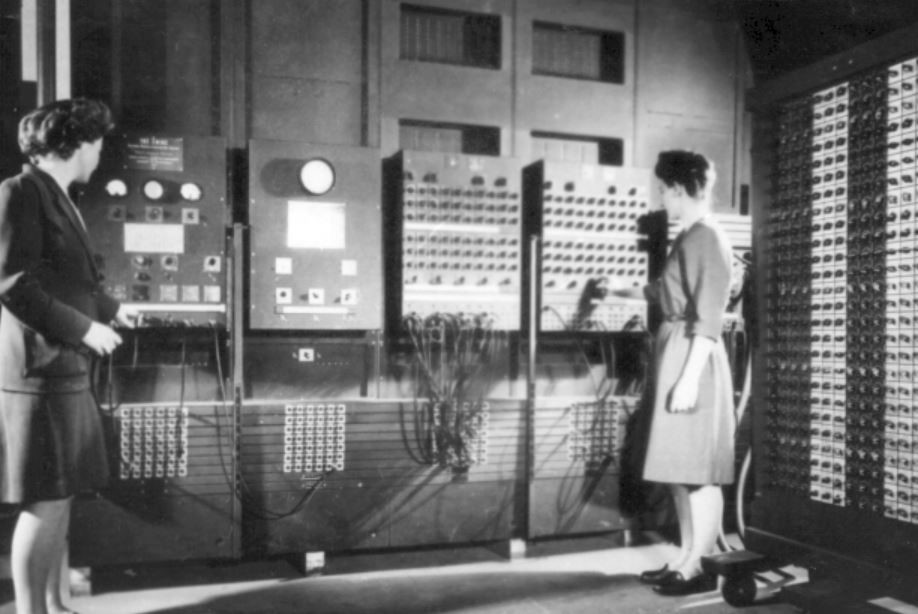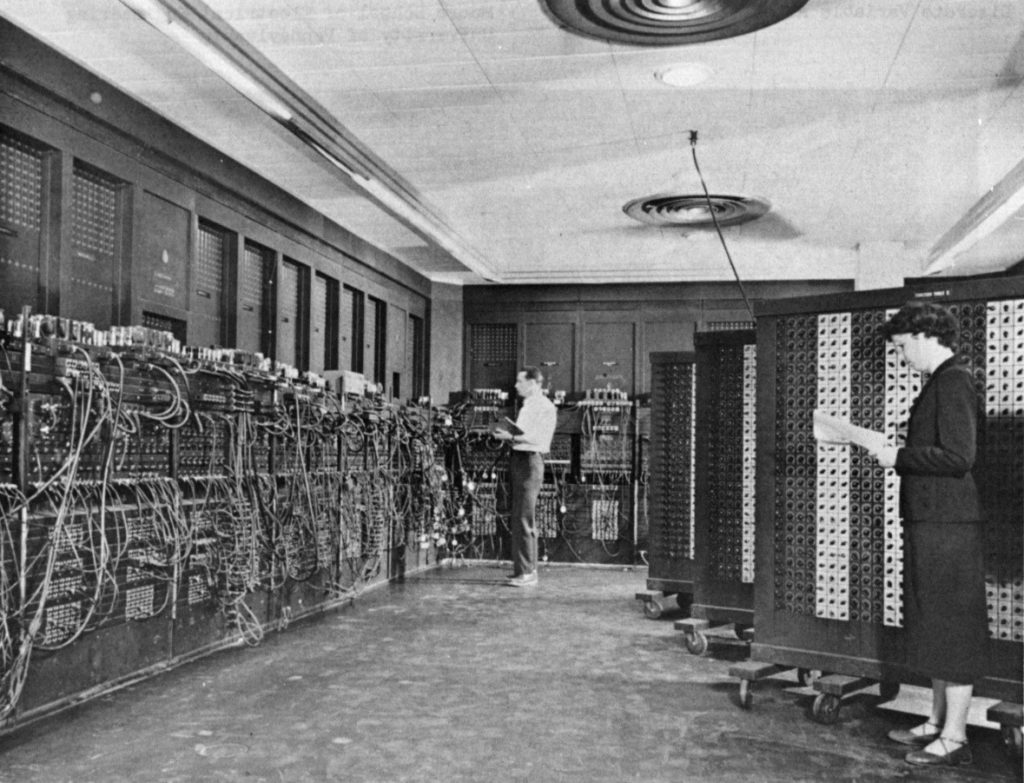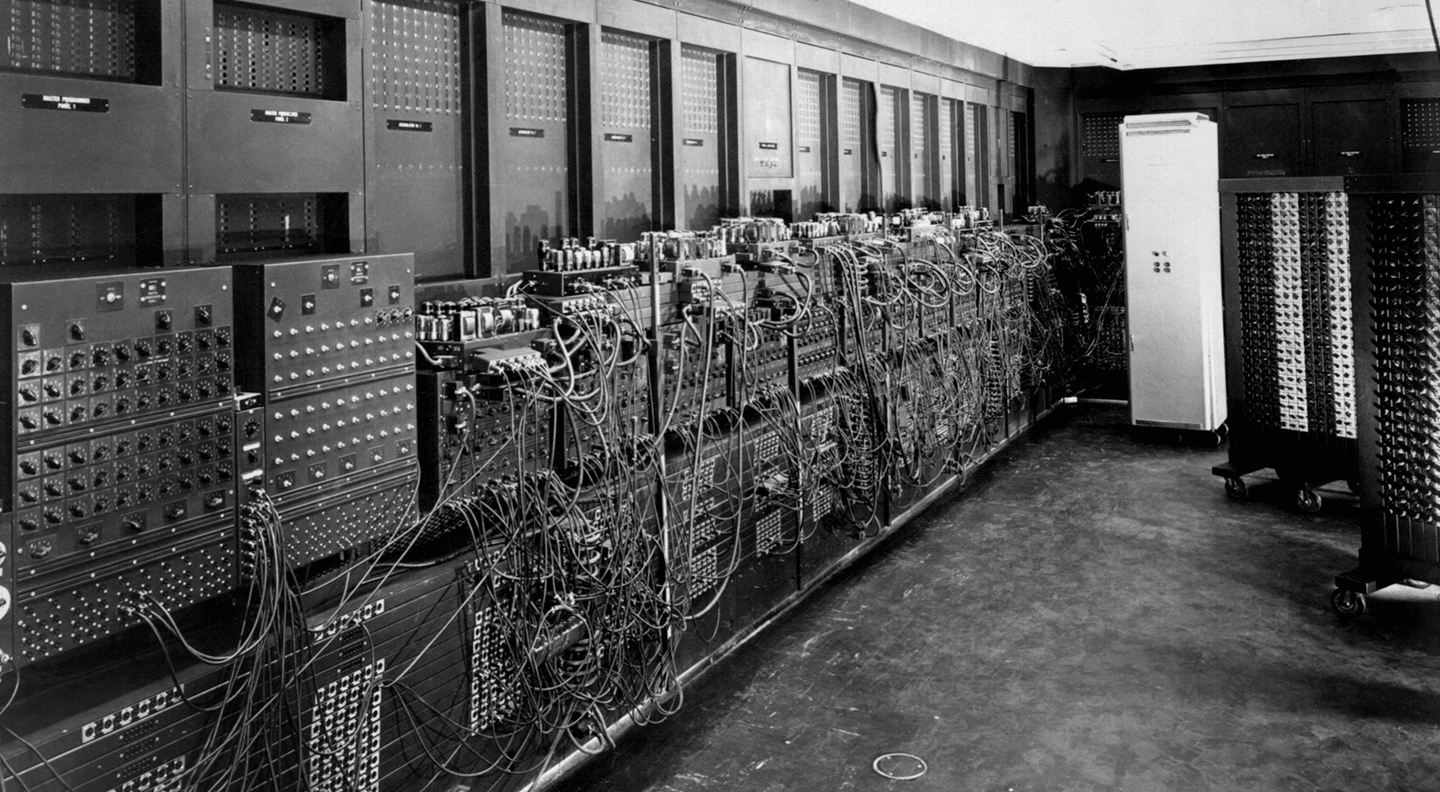Refurbishing and reusing assets are practices as old the computer itself.
The world’s first electronic digital computer, ENIAC (electronic numerical integrator and computer), was built for the U.S. Army between 1943-1945 and ushered in the Information Age. When it was refurbished then redeployed in 1946 it was the beginning of processes we follow in today’s IT asset disposition (ITAD) industry.
Along with radar, blood transfusions and the large-scale production of penicillin, computers were innovated during World War II. ENIAC was built by the University of Pennsylvania to calculate the trajectory of projectiles and bombs, and it was a beast. Weighing in at 30 tons and housed in a 1,500-square-foot room, ENIAC’s 40 nine-foot cabinets contained over 18,000 vacuum tubes and 1,500 relays, as well as hundreds of thousands of resistors, capacitors, and inductors. An Army press release stated ENIAC was, “a new machine that is expected to revolutionize the mathematics of engineering and change many of our industrial design methods.”1 And it did from the beginning- ENIAC could calculate a trajectory 2,400 times faster than a human. 2
Still, because the war was nearly over by the time ENIAC was completed (at nearly eight times its original $61,000 budget), it was no longer fit for purpose. So, in November 1946 ENIAC was shut down. It was refurbished and given a memory upgrade in July1947. Now capable of around 5,000 calculations a second, ENIAC was a thousand times faster than any other machine in operation.
Additional upgrades were ongoing. A critical upgrade addressed challenges around programming. Herman Goldstine, who helped build ENIAC, explained that, “The main difficulty was that this was not a stored program computer. Once we set it up to solve a problem it could do so very quickly. But every time we needed to change it we had to go back and reprogram it, which would take up to two days.”3 With the installation of a converter unit in 1948 the computer could be programmed using standard IBM cards, reducing reprograming time to hours and making it a multi-purpose machine like the computers we use today.
This programming was first done by six women taken from the team of 200 women working at the university as mechanical “computers”, one of the few technical job categories made available to women while men went to war. Because their extensive experience made the positions difficult to replace with retiring soldiers, these women continued to work on ENIAC after the war ended, though their work went unrecognized to the public until the 1980s.

Photo courtesy the U.S. Army and the archives of the ARL Technical Library

To learn more about ENIAC’s ground breaking female programmers, visit the ENIAC Programmers Project.
During its lifetime, ENIAC performed calculations for the design of a hydrogen bomb, weather predictions, cosmic-ray studies, random-number studies and even wind-tunnel design. Still, it wasn’t an easy machine to use, with operational challenges that are familiar to data center staff today- excessive heat generation and energy consumption, and the threat posed by lightning strikes. Two 20-horsepower blowers were ENIAC’s sole source of cooling, and the room temperature regularly reached 120 degrees Fahrenheit. Using160kW of energy, there were rumors that the lights in Philadelphia dimmed when ENIAC was switched on and its operation resulted in blackouts. One challenge proved fatal. ENIAC operated until it was felled by a lightning strike on October 2, 1955. It was believed that ENIAC had done more calculations than all of humanity at that time.4
By then, computer technology was advancing at a rapid pace. Throughout the 1940s and 1950s the development of the transistor and integrated circuit helped to shrink the weight of computers from tons to mere pounds. In the 1970s the patent for the ENIAC’s computing technology entered the public domain, lifting restrictions to develop and modify its technological designs.5 Over the next few decades computers became smaller, more powerful and, critically for most of us, more affordable.
In 1996, students at the University of Pennsylvania celebrate ENIAC’s 50th anniversary by fabricating “ENIAC-on-a-Chip“, placing the computer’s entire functionality on a 7.44mm by 5.29mm chip. Today, the laptop used to write this post has more computing power than ENIAC did. But ENIAC’s spirit of innovation and practical approach to refurbishing, upgrading and reusing equipment lives on in the work we do at Sims Lifecyle Services.
To learn more about refurbishing and reusing data center equipment, visit https://www.simslifecycle.com/data-center/infrastructure/.

Refurbishing and Reusing Data Center Equipment
Learn more about how SLS helps companies extend the lifecycle of data center equipment.
